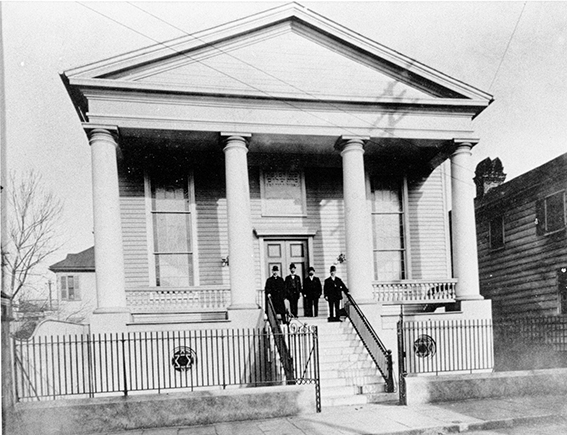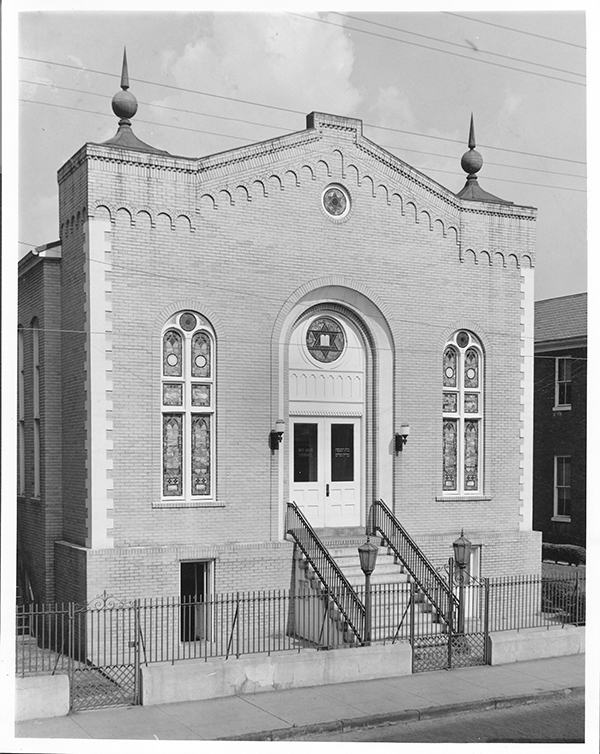Brith Sholom Synagogue
Brith Sholom (Covenant of Peace), originally spelled Berith Shalome, was organized by Jewish immigrants from eastern and central Europe. Known as the “German and Polish” or simply the “Polish” synagogue, it was the first Ashkenazic congregation in South Carolina and one of the first in the South. The congregation grew from a minyan founded by Rabbi Hirsch Zvi Margolis Levine (1807–1887), one of the earliest trained and ordained rabbis to come to America. He arrived in Charleston in 1852 and immediately began meeting with a group of men whose names—twenty-six in all—he noted in Hebrew and English in a record book. By 1854, the worshippers had rented a small structure on this property (their landlord was John L. Francis, a free person of color). In 1861, they acquired the lot for $1,800, and in 1874, they built a wooden synagogue there. Reverend Joseph H. M. Chumaciero from Reform Congregation Kahal Kadosh Beth Elohim (KKBE) participated in the dedicatory festivities; KKBE, in fact, had donated the ark and also old pews from its Hasell Street building.
Until its 1954 merger with Beth Israel, Congregation Brith Sholom remained at this location, making the area a center of Orthodox Jewish life in the city. The synagogue was rebuilt and enlarged in 1929, and modernized again in 1947. When Brith Sholom and Beth Israel united, Brith Sholom moved into the younger shul’s new Moorish synagogue at 182 Rutledge Avenue, bringing with it several architectural elements, including the Aron Kodesh (ark) framed by Corinthian columns that had graced its sanctuary since 1874. The College of Charleston’s Simons Center for the Arts and The Marion and Wayland H. Cato Jr. Center for the Arts now occupy the St. Philip Street site. See Discovering Our Past for more information on 40–70 St. Philip Street.

Brith Sholom, exterior, ca. 1900

Brith Sholom, exterior, after 1929 renovation
The synagogue sometime after it was rebuilt in 1928–9 with a brick façade. Dedication services were held March 31, 1929.